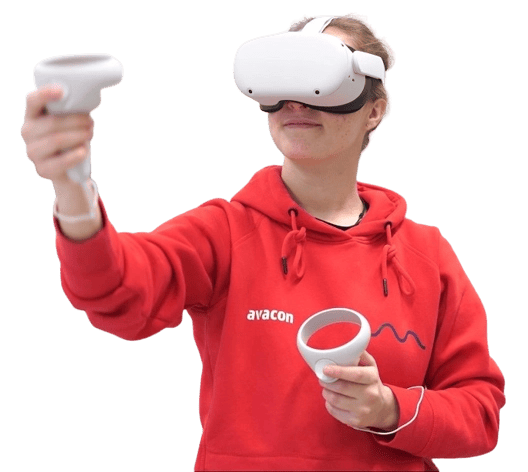Choosing the Right Virtual Classroom Platform: A Comprehensive Guide
Learn how to choose the right virtual classroom platform for your online learning or corporate training needs with our comprehensive guide.
Improve your students' online learning experiences with our guide to choosing the right virtual classroom software.
01. Virtual Classroom Software Benefits
02. 6 Best Virtual Classroom Platforms
03. Unleashing The Power Of Virtual Reality Training
04. What’s The Difference Between Virtual And Digital Classroom?
05. Top Features to Look for When Choosing a Virtual Classroom Software for Remote Learning
The education landscape has shifted dramatically in recent years, with the advent of technology leading to the rise of virtual classroom platforms. They allow students and teachers to connect from any location, providing a flexible and convenient way to learn and teach. Choosing the right virtual classroom software is crucial to ensure that your learning environment is effective and efficient.
Virtual classroom platforms are becoming an increasingly popular solution for remote learning. Virtual classroom software offers numerous benefits to both students and educators, including increased flexibility, cost-effectiveness, and enhanced engagement. With the ability to connect from any location, virtual classroom software offers a convenient and efficient way to learn and teach.
One of the most significant benefits of virtual classroom platforms is the flexibility they provide. Students and teachers can connect from anywhere, eliminating the need to be physically present in a classroom. This is especially important for learners who have other commitments, such as work or family obligations.
Virtual classroom software can be cost-effective for educational institutions, as they eliminate the need for physical classrooms and associated costs, such as rent, utilities, and maintenance.
Virtual classroom platforms provide interactive features, such as video conferencing, chat, and shared whiteboards, that can enhance student engagement and participation. These features make it easier for students to collaborate, ask questions, and receive feedback from their peers and instructors..
With a multitude of virtual classroom software available, it can be overwhelming to choose the right one. We provide a comprehensive overview of the best virtual classroom software, including its features, benefits, and limitations. By understanding the various options available, educators and students can select the best platform to meet their specific needs and enhance their online learning experience.
Zoom is a video conferencing software that offers features such as screen sharing, breakout rooms, and chat. It is user-friendly and can be used on a variety of devices, including laptops, tablets, and smartphones.
This collaboration software offers features such as video conferencing, screen sharing, and file sharing. It integrates seamlessly with other Microsoft products, such as Office 365.
As a video conferencing platform, it is integrated with Google Workspace. It offers features such as screen sharing, breakout rooms, and live closed captions.
Cisco Webex offers features such as screen sharing, virtual backgrounds, and whiteboarding. It is designed to be secure and reliable.
This web conferencing software offers features such as screen sharing, breakout rooms, and whiteboarding.
As an open-source web conferencing platform, BigBlueButton features such as screen sharing, breakout rooms, and polling. It is free and can be integrated with learning management systems.
Lengthy video meetings often require a high level of concentration and can lead to exhausting visual strain due to the constant staring at the screen and focusing on the camera. In addition, a lack of face-to-face interaction can make communication difficult and lead to lower participation among participants. However, engaged learners are more motivated to absorb and apply information, which ultimately leads to better results.
For more engagement and less distraction in learning, it is worth digging into the digital magic box. Interactive elements such as group work, discussions, and active participation allow learners to actively participate and become more involved in the learning process. The integration of various media contents such as videos, interactive presentations and quizzes arouses the interest of the learners and motivates them to deal with the learning material more intensively.
Many companies are now going one step further and using Virtual Reality training. Here, 3spin Learning offers customized software solutions for virtual classrooms that meet the specific requirements of educational institutions.
We work closely with teachers and education professionals to develop innovative features that enhance online learning. These include interactive multi-user sessions, virtual breakout rooms, and real-time communication tools. By working with 3spin Learning, schools, and educational institutions can create an effective and engaging online learning environment and significantly improve the quality of distance learning.

As an award-winning VR learning platform, we offer immersive training experiences with virtual classroom features and actively support Avacon in its training efforts.
Virtual classrooms, digital classrooms, and LMS platforms all have unique features and benefits that can enhance the teaching and learning experience. It is essential to understand the differences between these platforms and select the one that best fits your needs and teaching goals.
A virtual classroom is an online learning environment where students and teachers can connect and interact with each other in real-time, regardless of their physical location. It is a web-based platform that uses tools such as video conferencing, live chat, and virtual whiteboards to facilitate teaching and learning. In a virtual classroom, students and teachers can engage in discussions, collaborate on projects, and receive instant feedback. Virtual classrooms provide the flexibility of learning from any location and can be accessed through a computer or mobile device.
A digital classroom is a physical classroom that is equipped with technology tools such as computers, interactive whiteboards, tablets, and projectors. In a digital classroom, teachers use these tools to enhance their teaching and make the learning experience more engaging for students. For example, an interactive whiteboard can be used to display multimedia content, while tablets can be used for interactive activities and assessments.
An LMS, or learning management system, is a software application that is used to manage and deliver online courses. It provides a centralized platform where instructors can create and organize course content, track student progress, and facilitate communication between students and instructors.
An LMS primarily provides asynchronous learning experiences. In an LMS, students can access course materials at their own pace, complete assignments, and take quizzes and tests, but they typically do not have real-time interactions with their peers and instructors. An example here is Moodle which is widely used as an open-source platform designed to support online learning and course management.
One significant difference is the focus of each platform. A virtual classroom is designed to provide live instruction and real-time collaboration, while an LMS is primarily used for course management and content delivery. An LMS typically includes features such as discussion forums, messaging, and progress tracking, but it does not provide the same level of real-time interaction as a virtual classroom.

The effectiveness of virtual classroom software is directly related to its ability to meet the needs of both students and educators, with features that enhance engagement and facilitate effective learning. When selecting a virtual classroom software for remote learning, there are several key features to look for that will help ensure a successful and effective learning experience for students. Here are some of the top features to consider:
By prioritizing these features when selecting virtual classroom software, organizations can ensure that they are choosing a tool that will facilitate effective and engaging remote learning for their students.
With the rise of remote schools and work, many companies are looking for the right virtual classroom platform to help their students acquire new skills and stay up-to-date with the latest industry trends.
Choosing the right virtual classroom software is important because it can significantly impact the quality of the learning experience for both instructors and students. A good virtual classroom software should have features like video conferencing, chat and messaging tools, screen sharing, and interactive whiteboards, among others. It should also be user-friendly, secure, and scalable.
In summary, companies need virtual classroom software to provide their students with a convenient, cost-effective, and efficient way of learning new skills and knowledge.

Learn how to choose the right virtual classroom platform for your online learning or corporate training needs with our comprehensive guide.
Learn about LMS Benefits and how authoring platforms such as 3spin Learning can help you smoothly integrate Virtual and Augmented Reality into your...
Reasons why we need learning management systems (LMS) as a powerful educational platform for successful teaching and learning.
Stay up to date on new insights in VR / AR learning with AI and build or improve your knowledge within the technology.